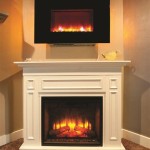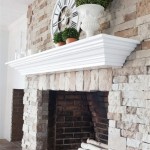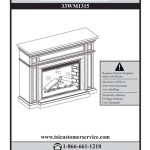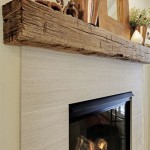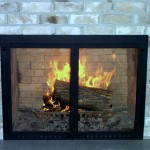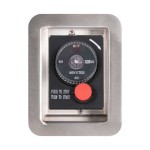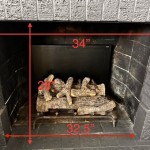How Much Does It Cost to Install a Fireplace and Chimney?
The installation of a fireplace and chimney is a significant home improvement project that can add both aesthetic appeal and functional heating capabilities to a residence. However, the cost associated with such an undertaking can vary widely depending on several factors, making it crucial to understand the components contributing to the overall expense. This article provides a comprehensive overview of the costs involved in fireplace and chimney installation, exploring the various elements that influence pricing and offering insights into budgeting for this type of project.
Understanding the factors that affect the price is key to planning and avoiding any budgetary surprises. Project scope, materials chosen, and labor rates all play significant roles. The complexity of the installation itself can also influence the final cost.
Key Factor 1: Fireplace Type and Fuel Source
The type of fireplace selected significantly impacts the overall installation cost. Fireplaces can be broadly categorized based on their fuel source: wood-burning, gas, and electric. Each type presents unique installation requirements and associated expenses.
Wood-Burning Fireplaces: These fireplaces typically require the most extensive installation due to the need for a proper chimney system to vent smoke and combustion byproducts. The cost of a wood-burning fireplace itself can range from a few hundred to several thousand dollars, depending on the size, style, and materials used. However, the more substantial expense lies in the chimney construction or modification which must conform to local building codes and safety standards. The chimney work involves ensuring proper flue sizing, installation of a chimney liner (often stainless steel), and the construction of a fire-resistant chimney chase. This can involve masonry work, framing, and roofing modifications, significantly driving up the price. Additionally, costs associated with permits and inspections must be considered.
Gas Fireplaces: Gas fireplaces offer convenience and efficiency and can be a popular option for homeowners. The installation cost for a gas fireplace includes the cost of the unit itself, which can range from several hundred to several thousand dollars depending on the model and features. A significant portion of the cost arises from running a gas line to the fireplace location. This may involve trenching, pipe installation, and connection to an existing gas supply. A licensed gas fitter is required for this work to ensure safety and compliance with regulations. Furthermore, gas fireplaces require venting, although it may be less extensive than that required for wood-burning fireplaces. Direct vent systems are common, allowing for venting through a wall rather than a traditional chimney. However, even with direct vent systems, costs associated with venting materials and labor need to be factored in. Gas fireplace installation also requires obtaining relevant permits and inspections.
Electric Fireplaces: Electric fireplaces are the easiest and least expensive to install. They do not require venting or fuel lines, making the installation process relatively straightforward. The primary cost is the fireplace unit itself, which can vary from a few hundred to several thousand dollars depending on the size, style, and features. Installation typically involves plugging the fireplace into an electrical outlet. The installation cost may increase if an existing electrical circuit needs to be upgraded to accommodate the fireplace's power requirements. This generally involves hiring an electrician to run a new circuit and install a dedicated outlet, incurring additional expenses. While permits are generally not required for electric fireplace installations, it is important to consult with local authorities to confirm compliance with building codes.
Key Factor 2: Chimney Construction and Modification Costs
The chimney is a critical component of a fireplace system, particularly for wood-burning and some gas fireplaces. The cost of chimney construction or modification can be a substantial part of the overall project expense.
New Chimney Construction: Building a new chimney involves significant labor and material costs. The chimney must be designed to meet local building codes and safety standards, including proper flue sizing and height requirements. Materials typically include brick, stone, concrete blocks, mortar, and chimney liners. The foundation for the chimney must be properly constructed to ensure stability and prevent settling. Framing and roofing modifications may also be necessary to accommodate the chimney. The cost of new chimney construction can range from several thousand to tens of thousands of dollars, depending on the size, materials, and complexity of the project. Factors that increase the cost include the height of the chimney, the use of premium materials like natural stone, and difficult site access.
Chimney Liner Installation: Chimney liners are essential for protecting the chimney structure from the corrosive effects of combustion byproducts. They also improve the draft of the fireplace and reduce the risk of chimney fires. Stainless steel chimney liners are the most common and durable option, but they can be costly to install. The cost of chimney liner installation depends on the height and diameter of the chimney, as well as the complexity of the installation. This process often involves removing existing debris and obstructions from the chimney flue, preparing the chimney for liner installation, and carefully inserting and securing the liner. Professional chimney sweeps typically perform this work. Expect to pay several hundred to several thousand dollars for chimney liner installation.
Chimney Repair and Modification: If an existing chimney is present, it may require repairs or modifications to make it suitable for a new fireplace. This can include repairing cracks or damage to the chimney structure, replacing damaged bricks or stones, and ensuring that the chimney is properly sealed and insulated. A professional chimney inspection is crucial to identify any necessary repairs or modifications. The cost of chimney repair and modification depends on the extent of the damage and the complexity of the work. Simple repairs might cost just a few hundred dollars, while more extensive repairs could cost several thousand. In some cases, it may be more cost-effective to rebuild the chimney entirely rather than attempt to repair it.
Key Factor 3: Installation Labor and Permits
Labor costs and permit fees are two often overlooked but essential factors that contribute significantly to the final cost of fireplace and chimney installation.
Labor Costs: The labor costs involved in installing a fireplace and chimney can vary widely depending on the complexity of the project, the location, and the hourly rates charged by contractors. In general, the more extensive the installation, the higher the labor costs will be. Labor costs typically include the time required for demolition, framing, masonry work, gas line installation, electrical work, venting installation, and finishing work. Hiring qualified and experienced contractors is crucial to ensure that the installation is done properly and safely. Obtaining multiple quotes from different contractors is a good practice to compare prices and find the best value. It's imperative to verify that the chosen contractors are licensed, insured, and have a solid reputation.
Permits and Inspections: Most municipalities require permits for fireplace and chimney installations to ensure compliance with building codes and safety regulations. The cost of permits can vary depending on the location and the scope of the project. Permit fees typically range from a few hundred to several thousand dollars. Obtaining the necessary permits is the responsibility of the homeowner or the contractor. Furthermore, inspections are typically required at various stages of the installation process to ensure that the work is being done correctly and that the fireplace and chimney meet all safety standards. Failing to obtain the necessary permits can result in fines and delays, so it is crucial to factor these costs into the budget.
Beyond these key factors, several other elements contribute to the overall cost of a fireplace and chimney installation. These include:
- Fireplace Design and Style: Custom designs and intricate detailing will naturally increase the cost.
- Materials Used: The choice of materials, such as natural stone versus manufactured stone, has a significant impact on expenses.
- Location: Geographic location influences labor rates and material costs.
- Accessibility: Difficult-to-access locations can increase labor costs due to the added complexity of the installation.
- Finishing Work: The extent of finishing work, such as installing a mantel or surround, impacts the overall price.
In summary, the cost of installing a fireplace and chimney is a multifaceted issue influenced by numerous interconnected factors. A thorough understanding of these factors is crucial for homeowners seeking to accurately budget for and successfully execute such a project. Given the complexity and potential safety implications, engaging qualified professionals for both planning and execution is highly recommended. This ensures compliance with regulations, proper installation, and ultimately, a safe and enjoyable fireplace experience.

How Much Does Chimney Replacement Cost In 2024 Forbes Home

What Does It Cost To Install A Fireplace Vs Wood Stove Stamford Fireplaces

Fireplace Installation Cost 2024 Gas Wood Burning Electric

How Much Does It Cost To Put In A Fireplace Direct Fireplaces

How Much Does It Cost To Build A Fireplace In 2024 Checkatrade

Fixr Com Cost To Install A Fireplace Build

Fixr Com Chimney Installation Cost S

What Is The Cost To Install Gas Fireplace Homeserve Usa

Estimated Page Fireplaces Stoves Inserts Wood Gas Pellet

How Much Does A Gas Fireplace Cost Fireplaces Direct Learning Center
Related Posts

